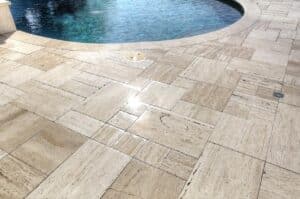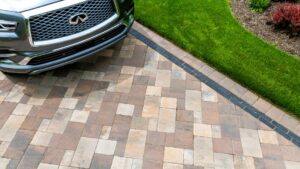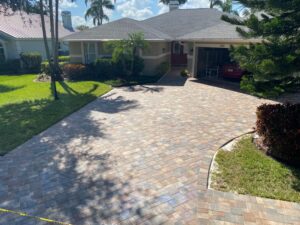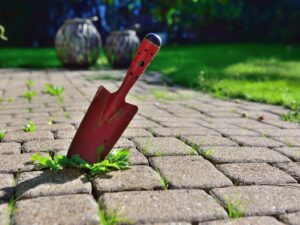Have you ever heard the phrase “a good foundation can hold anything”? This phrase can be applied in several situations, but when it comes to installing pavers, it makes so much more sense. The paver base is nothing more than the foundation for your pavers, the base consists of coats of aggregate under the pavers that give stability and strength.
If you’re wondering how to build a base for pavers, don’t worry. In this article, you’re gonna learn step by step about how to build one and all you need to know about base materials.
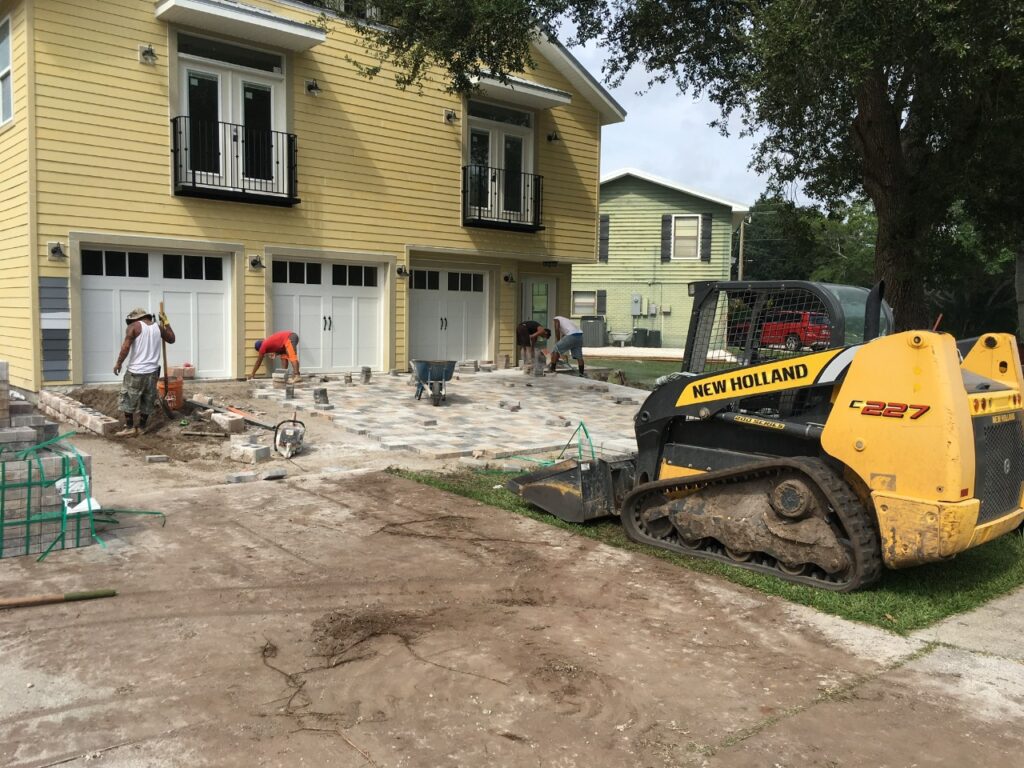
How to build a base for pavers?
Before you start to build a paver base, you’re gonna need the following tools and materials:
- A shovel
- A hand tamper or plate compactor
- Base materials of choice (can be gravel, crushed stone, sand, etc.)
- Edge restraints
- Geotextile fabric
- 12” steel spikes
- Safety equipment
All set? Now you can start!
Step 1: Excavation
Dig the area you want to cover with pavers then level the soil, then compact the soil with a compactor or a hand tamper.
It’s important to remember that areas exposed only to foot traffic need 4 to 6 inches of base, while areas that will be exposed to heavy traffic, like driveways, need about 12 inches of base.
Step 2: Lay geotextile fabric
After compacting, lay geotextile fabric to allow the water to pass without disturbing the particles underneath.
Geotextile fabric is highly recommended, especially in heavy traffic areas, they prevent soil movement beneath the surface and increase their durability.
Step 2: Choose the base material and lay the base
There are some types of base material you can choose from, which are sand, crushed stone, and stone dust, before you choose, consider their strength when compacted and if they drain the water well.
After choosing, lay the base with no more than 6 inches at a time to the entire excavated area, and then compact all again with a hand tamper or a plate compactor, repeat the process until is in the correct depth and all level. Remember that it’s super important that the base is properly compacted.
Step 3: Installing the edge restraints.
Edge restraints are what helps to hold everything in place for years and they can be made of plastic, aluminum, or steel. Place the restraints around the area you want to cover with pavers and secure them into the ground with 12″ spikes.
Step 4: Lay a coat of sand
The main job of the sand here is to hold everything in place. So, after the gravel and the edge restrains, add a layer of at least 1 inch. Then, if needed, slightly increase or decrease the thickness of the base.
Types of base materials
Sand
One of the most common materials for a paver base is sand, mostly because of drainage, since the material allows the water to flow without any problem.
But it’s important to say a base of sand alone is not a good choice for areas with heavy traffic, like driveways or even patios, because the material can shift.
Crushed Stone
Crushed stone is right behind sand when it comes to materials for a paver base, but unlike sand, crushed stone can make a good base for areas that will be used more regularly.
There are a ton of options for crushed stones, so it’s important to choose the specific design for use as a base material. You can also add a layer of sand above the crushed stone to give a smoother and leveled layer for supporting pavers.
Stone Dust
Among all the options, stone dust is the less recommended, since is not appropriate for paver base due to a few characteristics. The thin and fine texture of the material makes it more difficult to compact properly and, over time, the pavers can be uneven and sink. Another factor is the drainage of stone dust, it is very easy for pavers installed over stone dust to swamp during heavy rain.
Can I build a base for pavers alone?
You can, but we recommend you not to. Of course, you can cut some expenses by doing it yourself, but there are so many details involved and the chances of something going wrong is so high that it is just not worth it.
Preparing a good base for your pavers requires a lot of attention, so the best choice here is to count on the help of professionals. And if you are worried about the price, you can get a free estimate for your project.
S&S Pavers has been around the counties of Manatee and Sarasota for the last 10+ years. If you live in Florida, don’t hesitate to give us a call!

